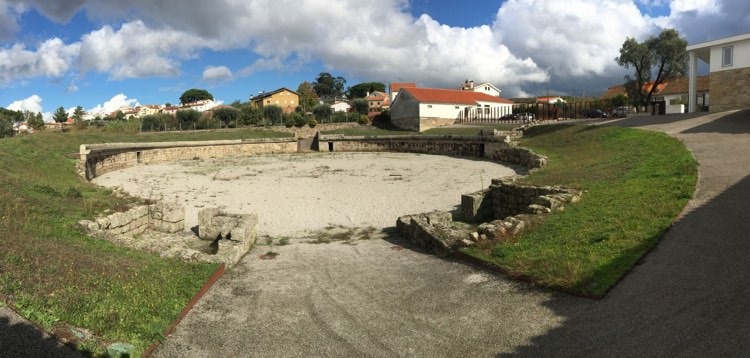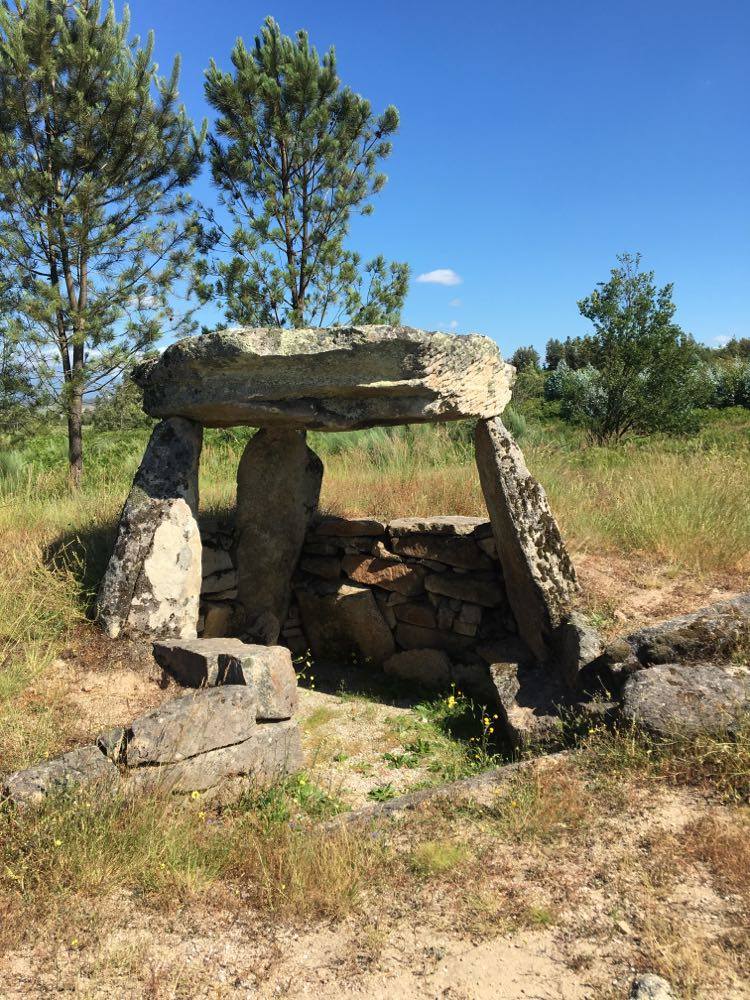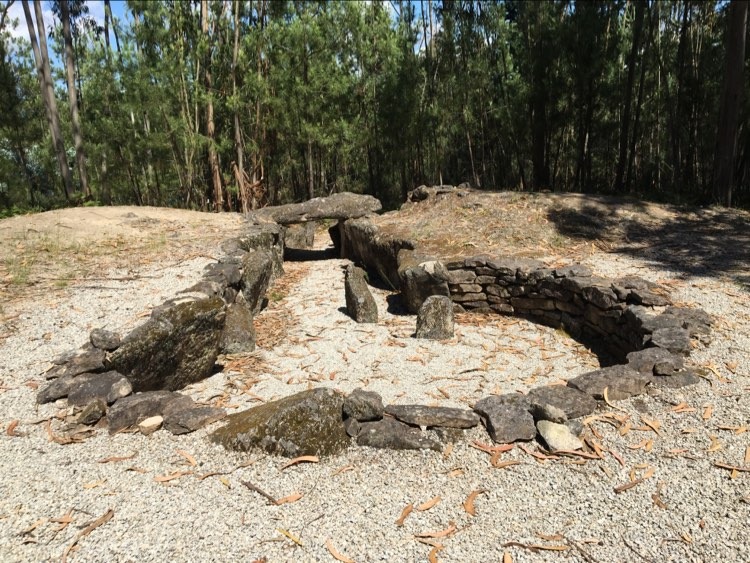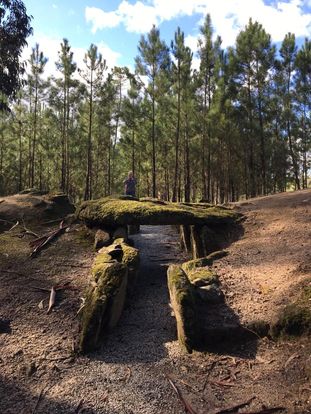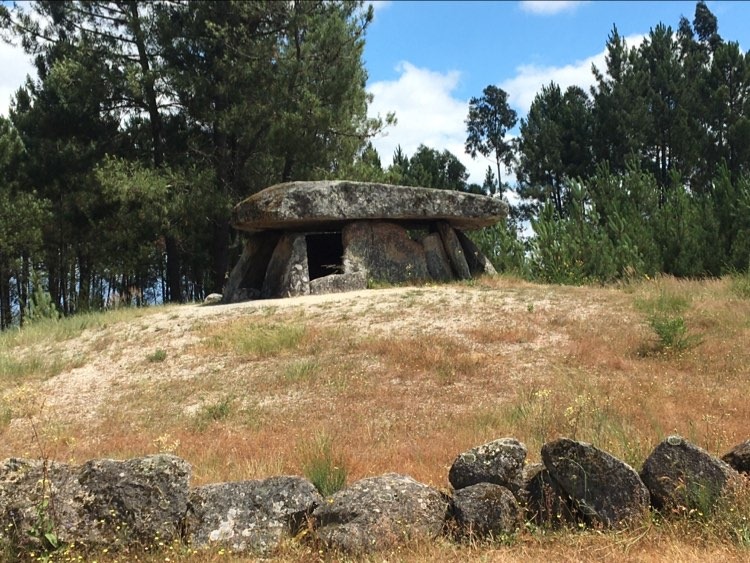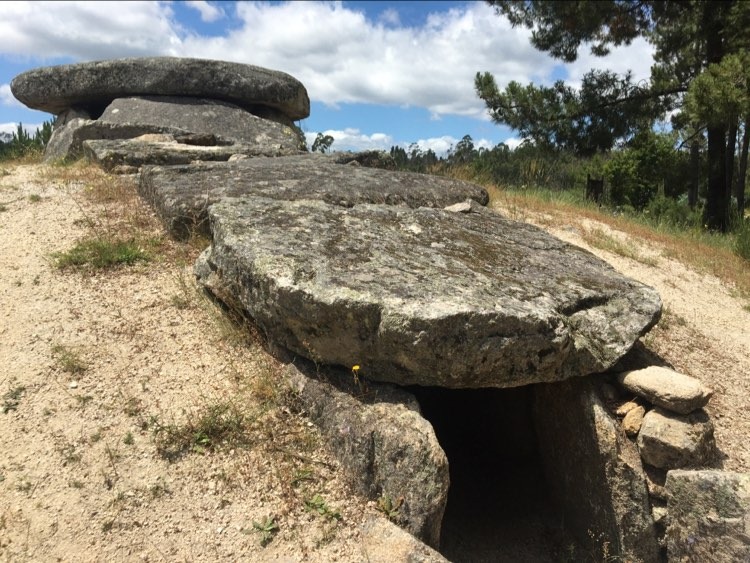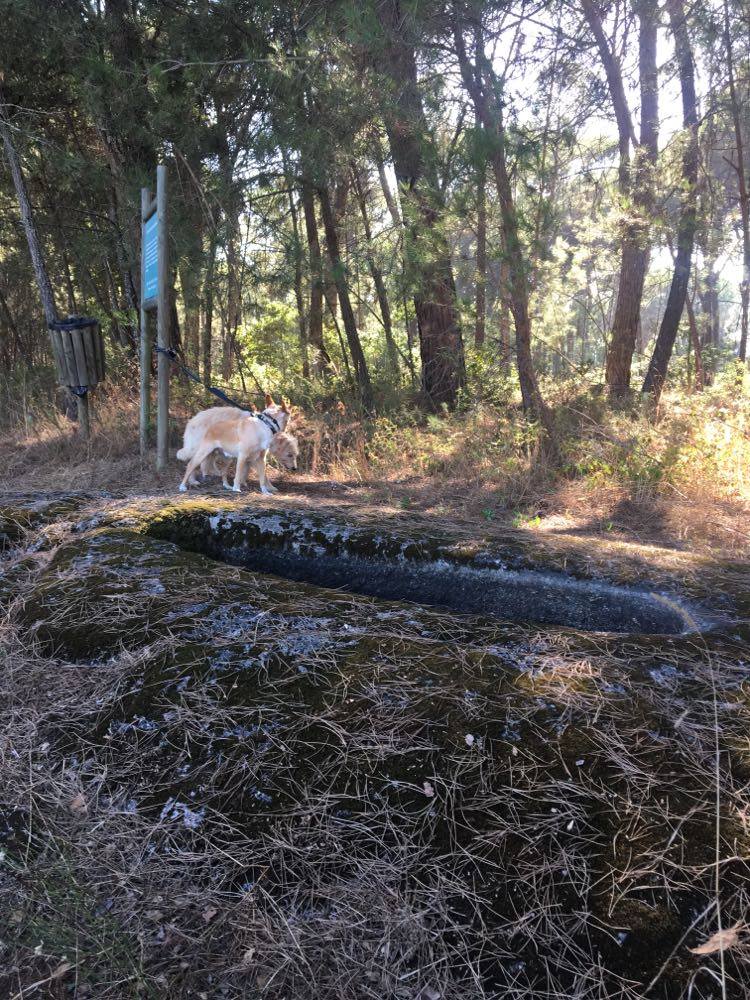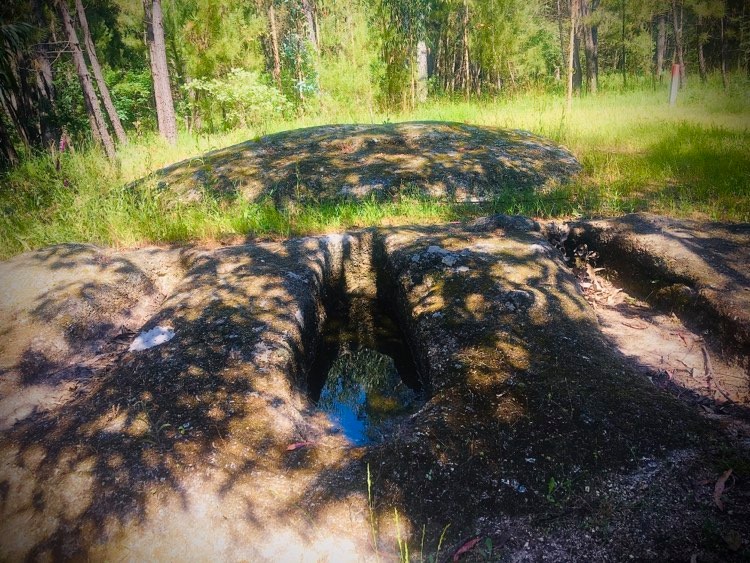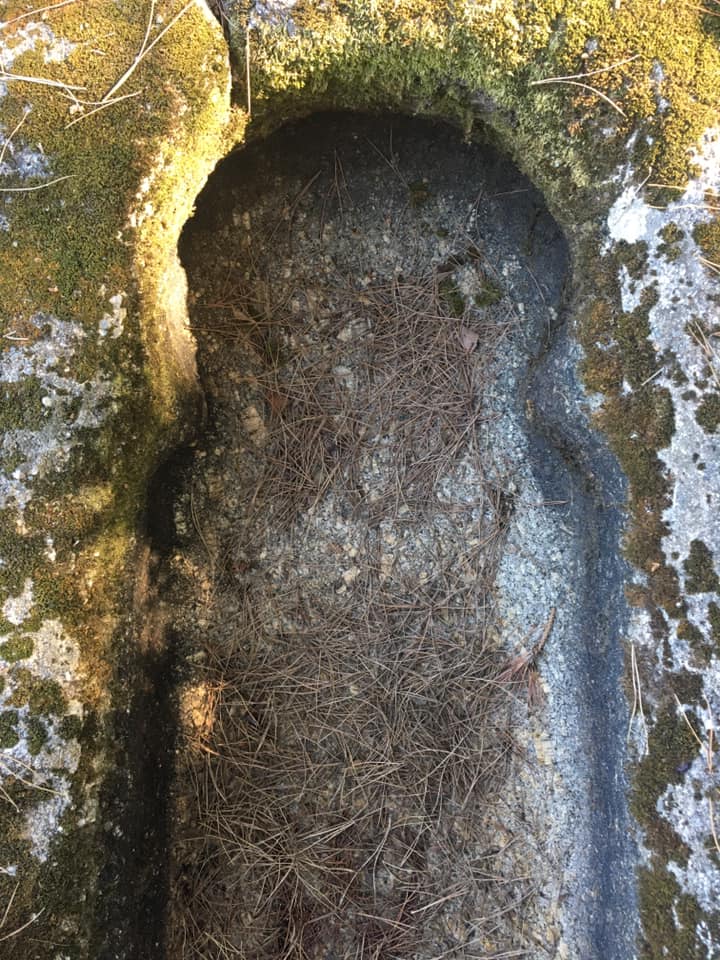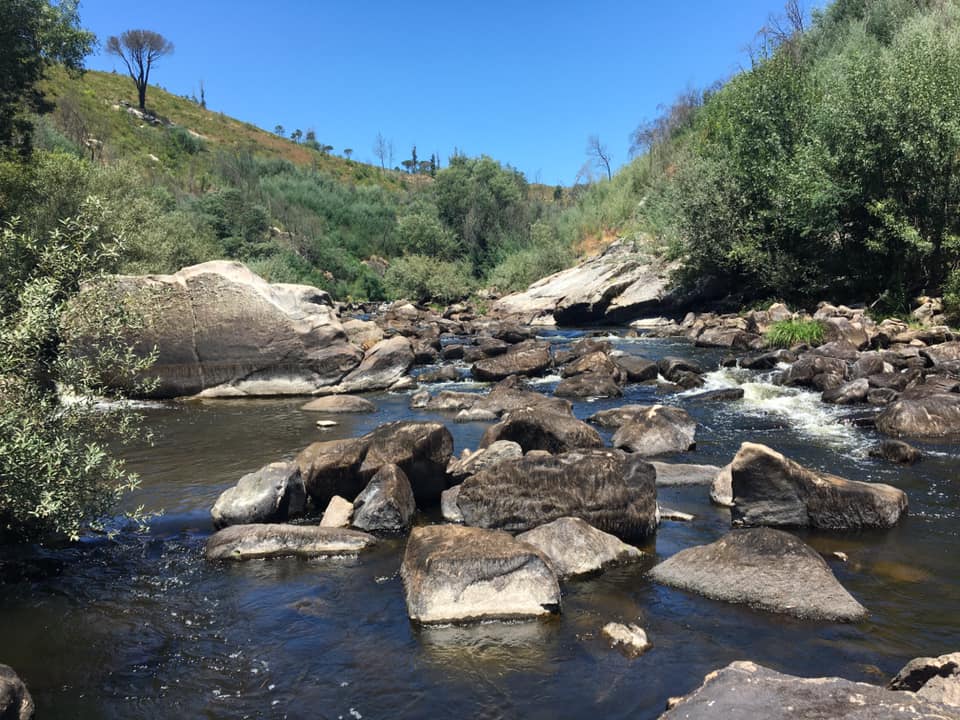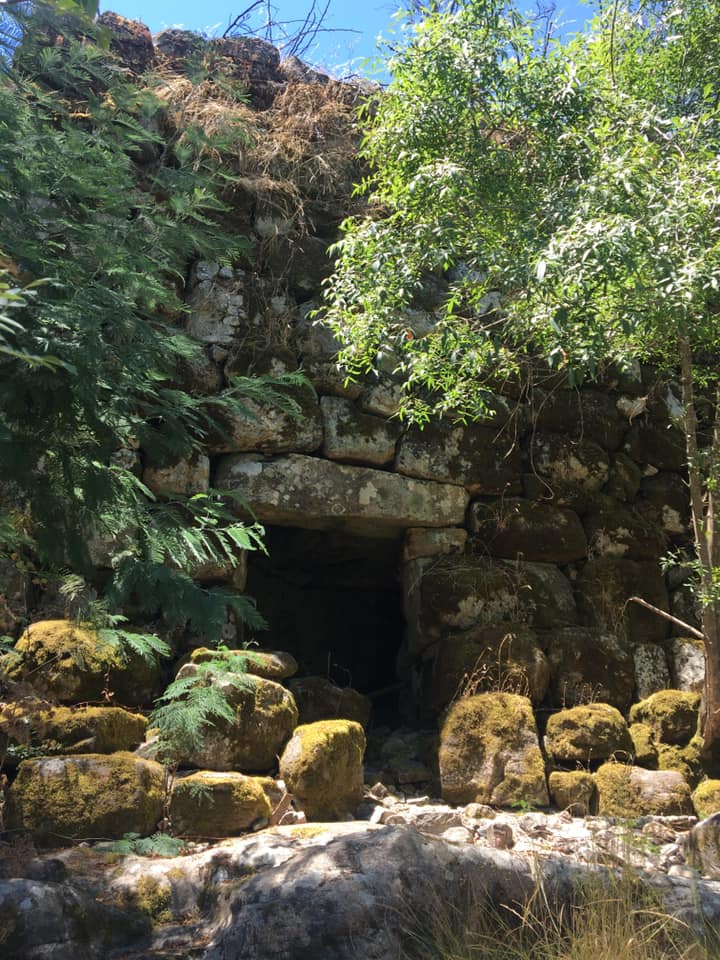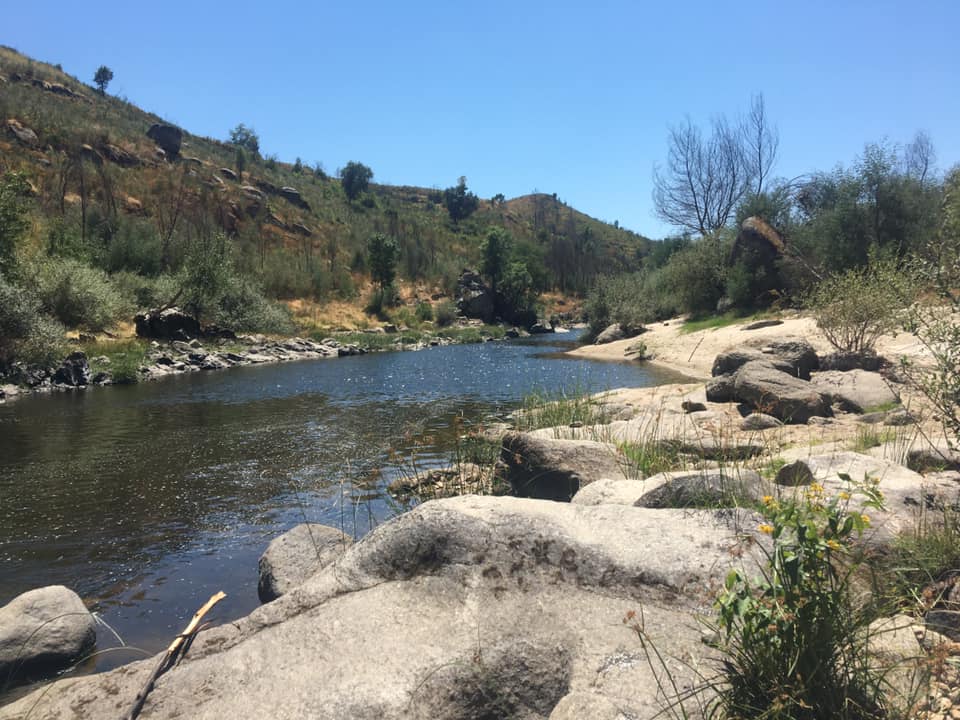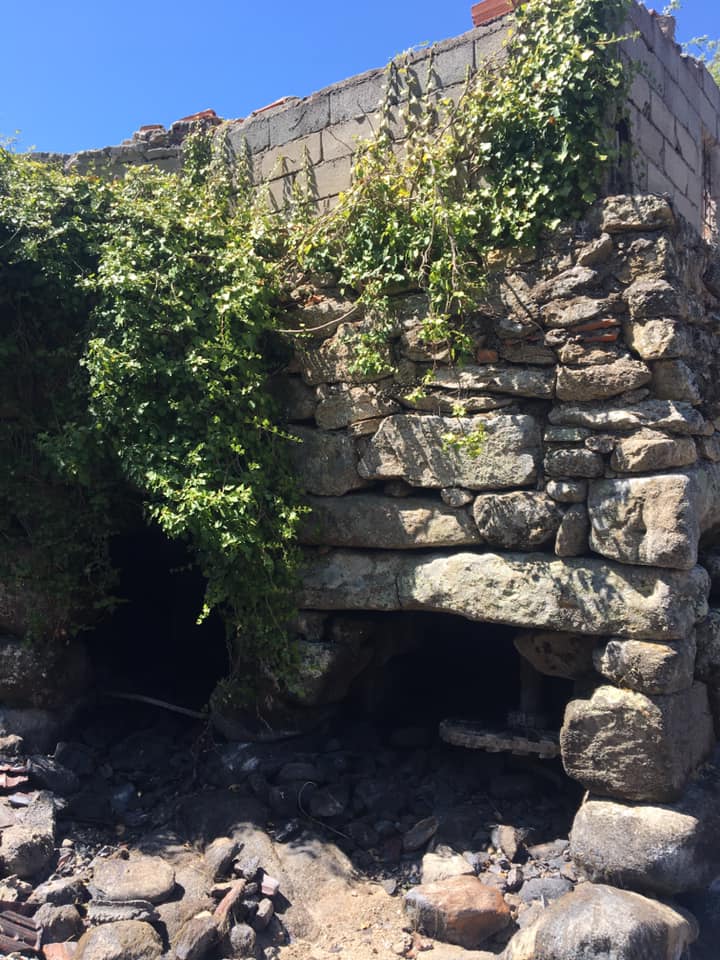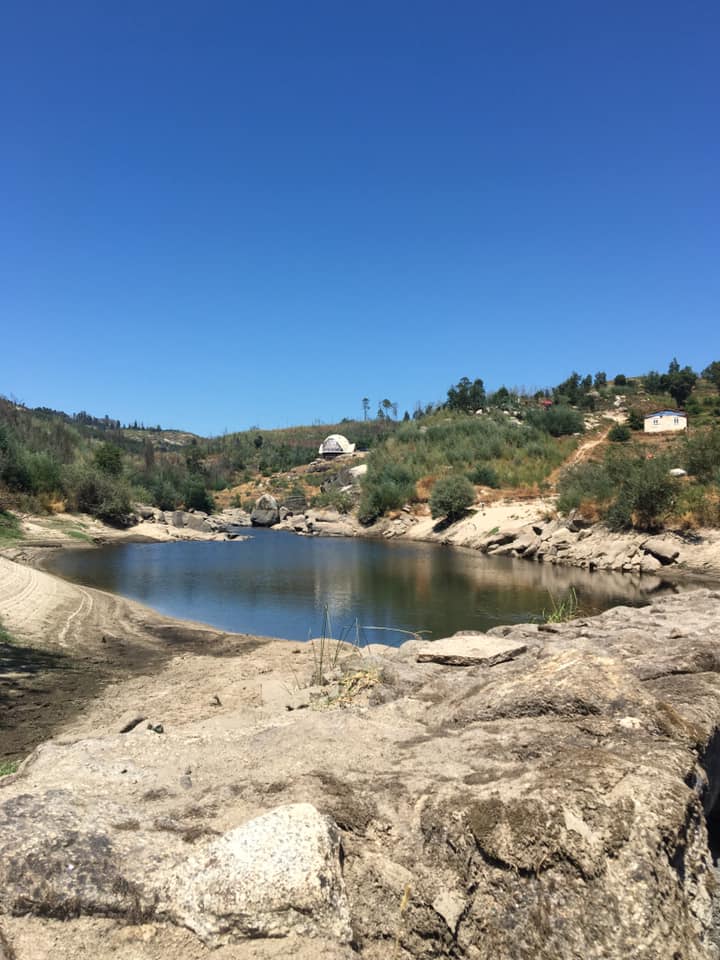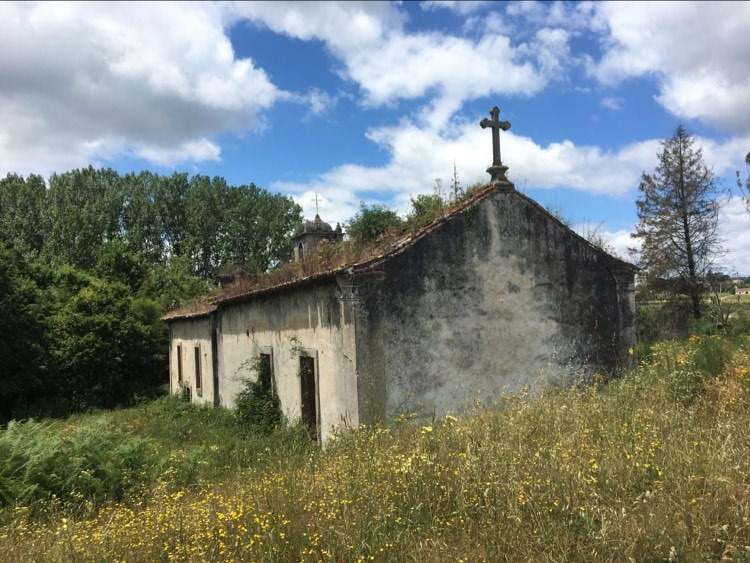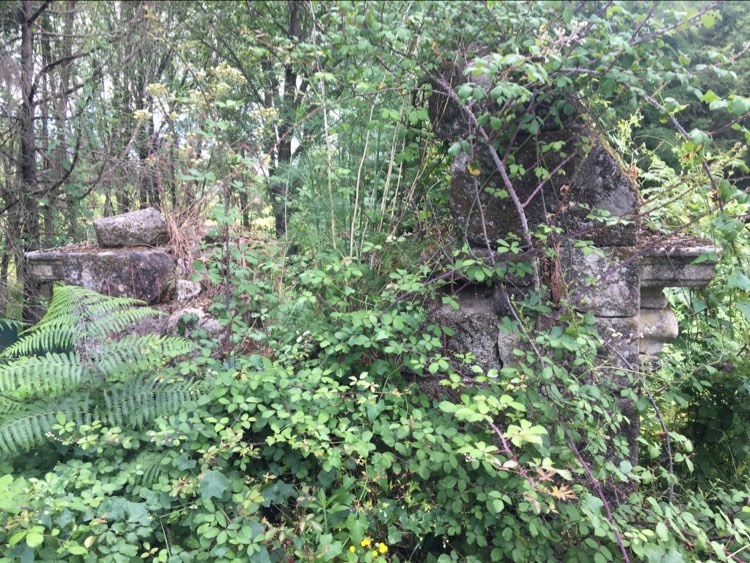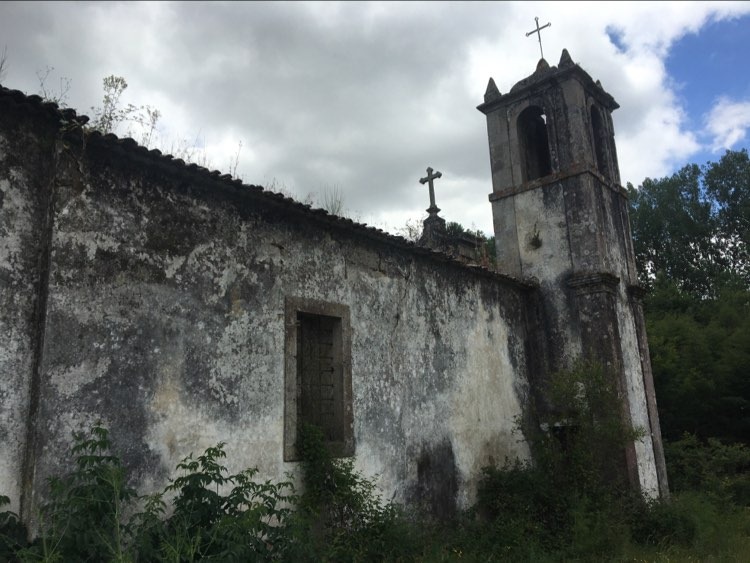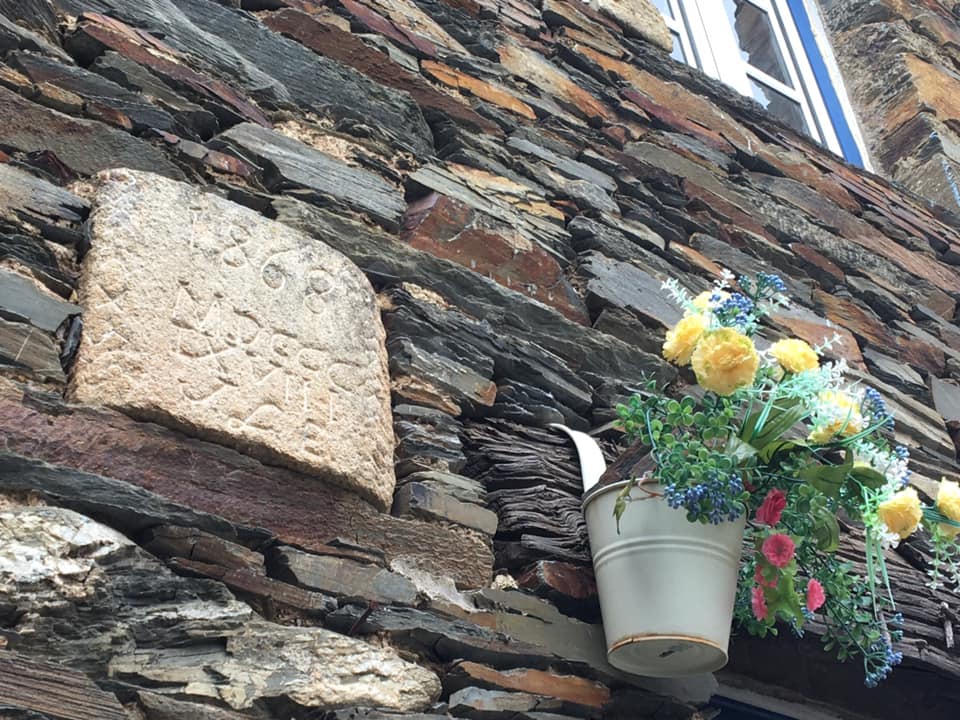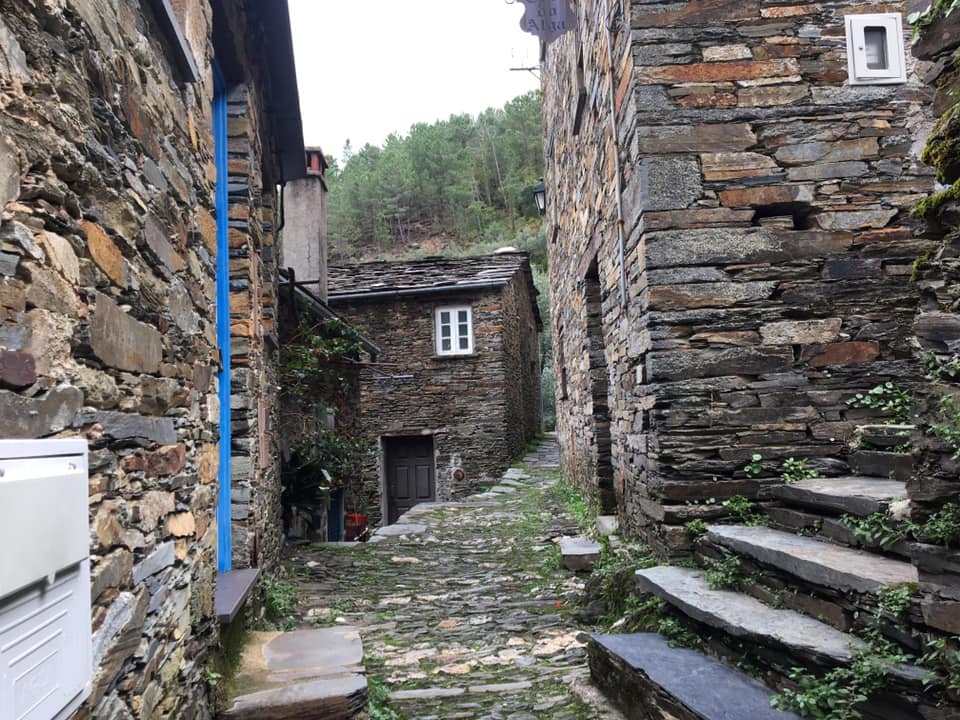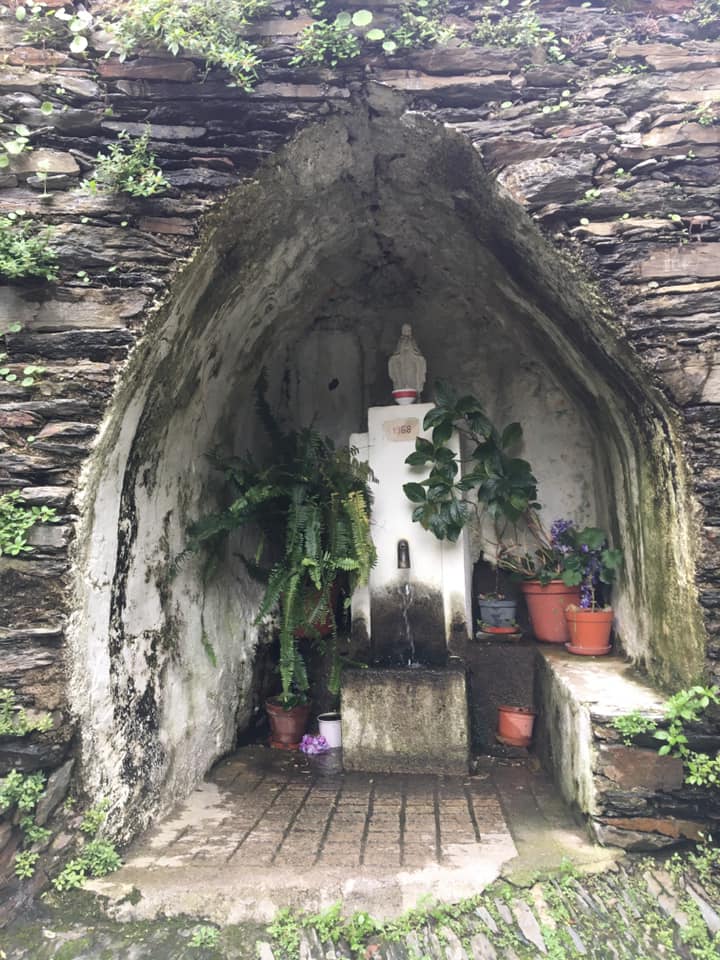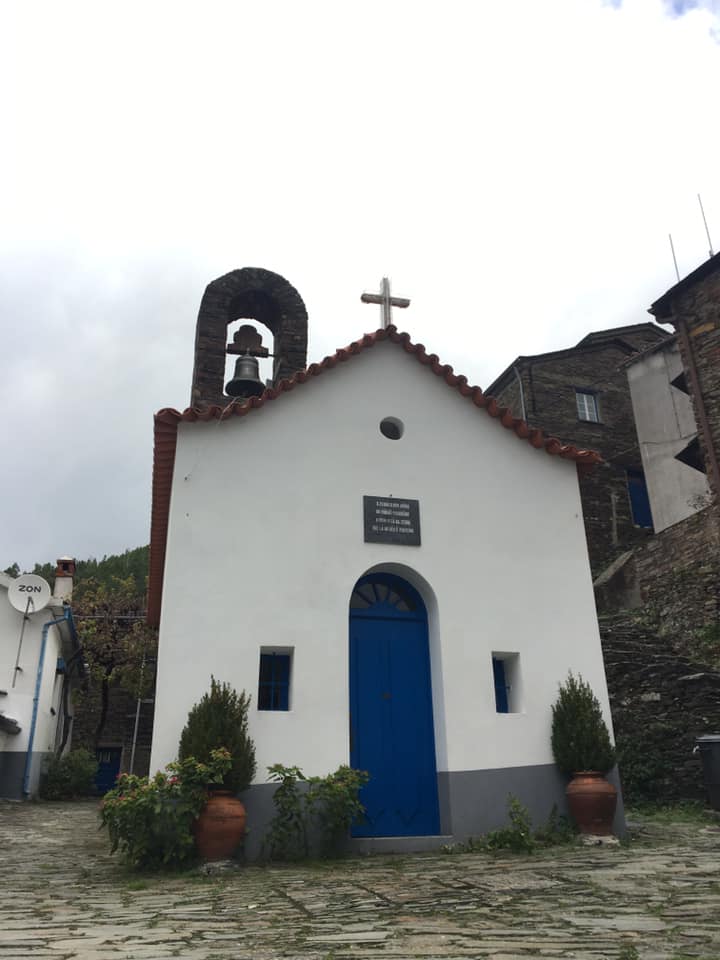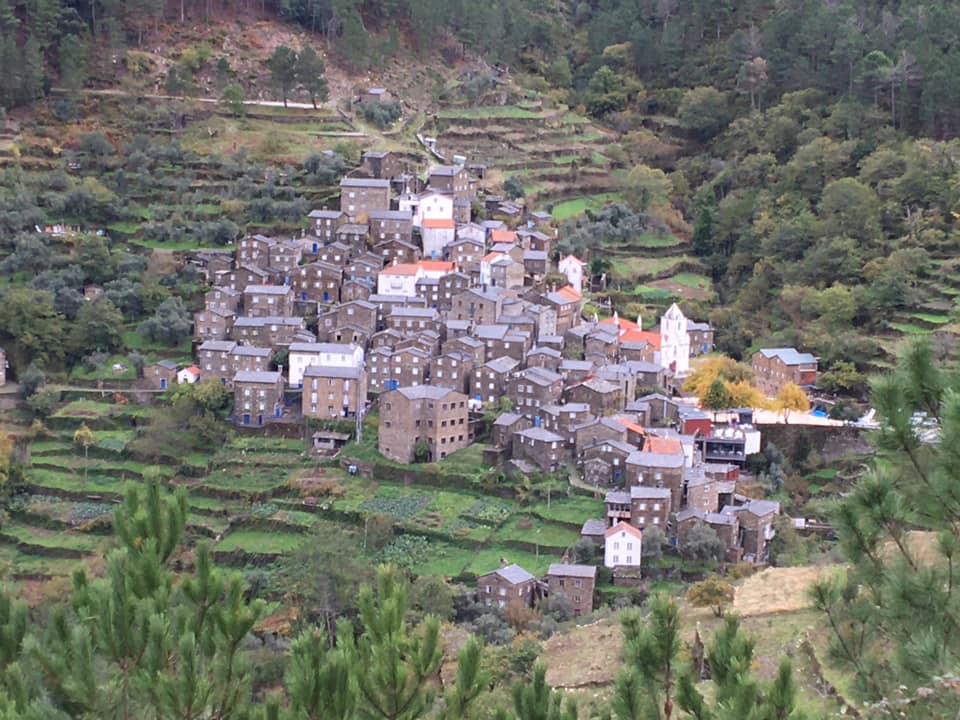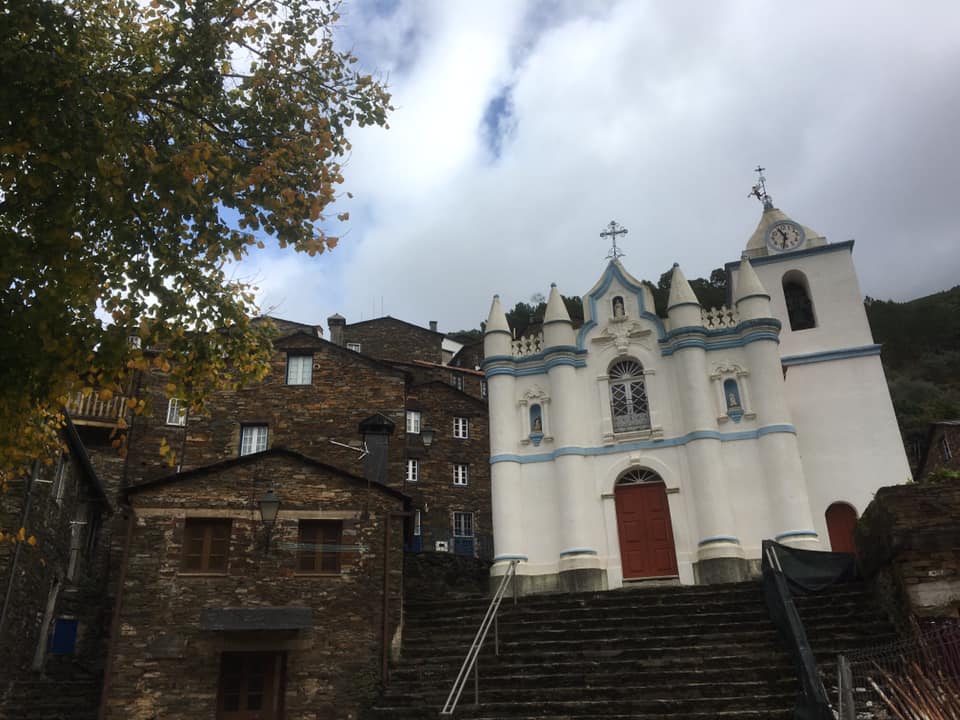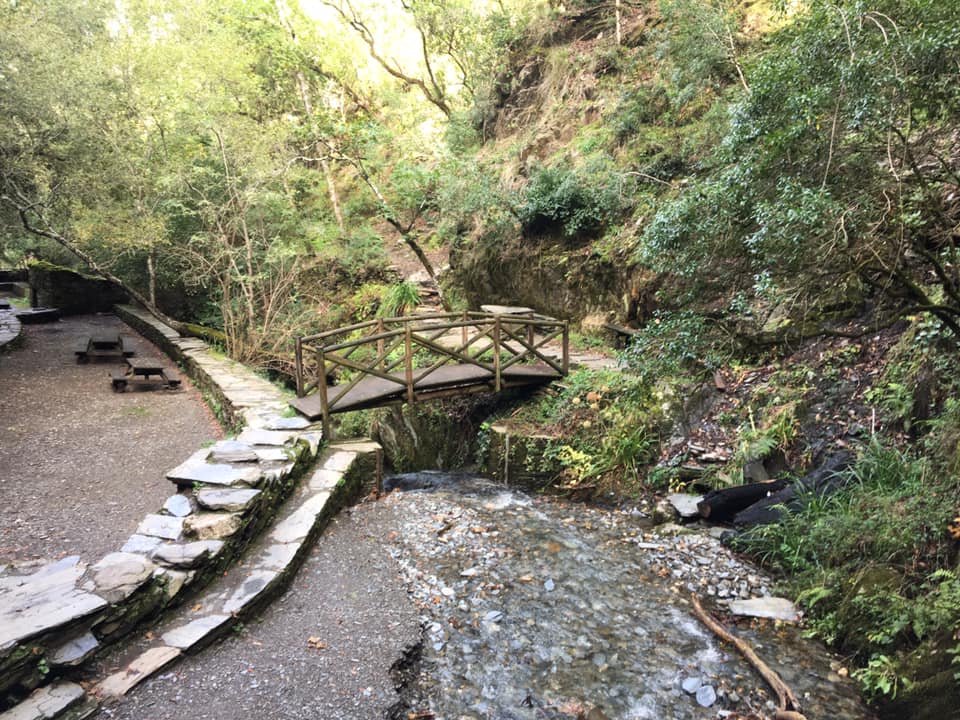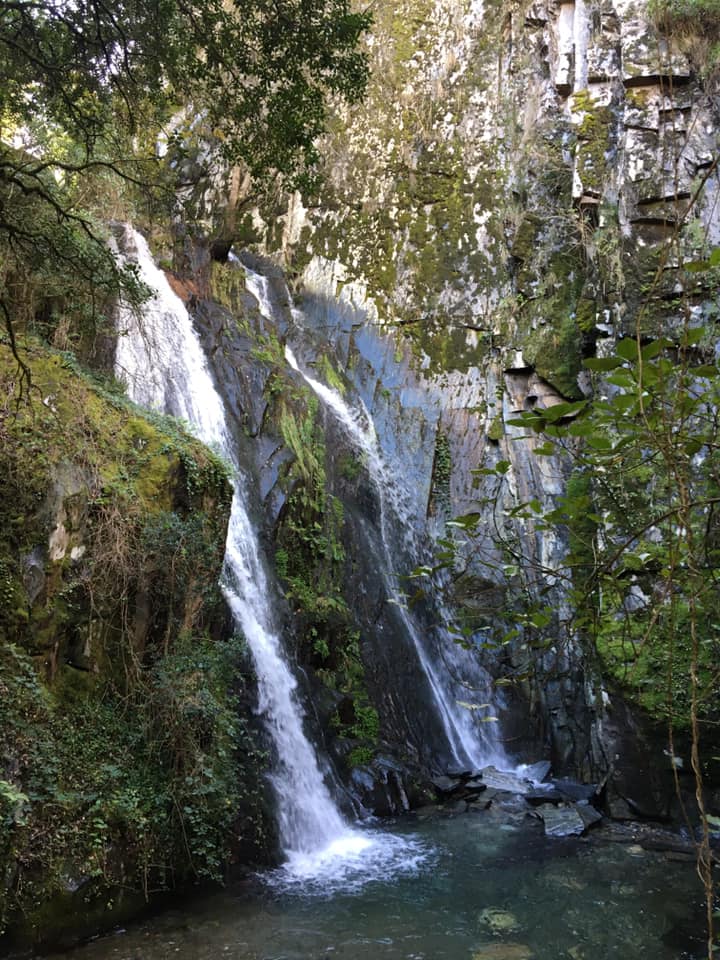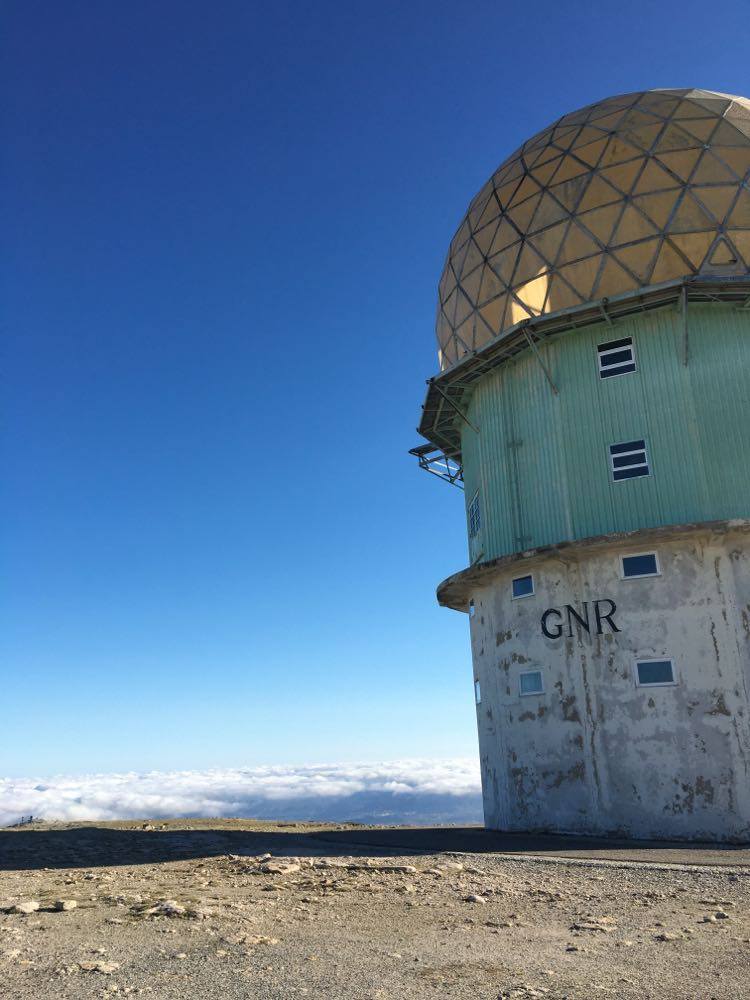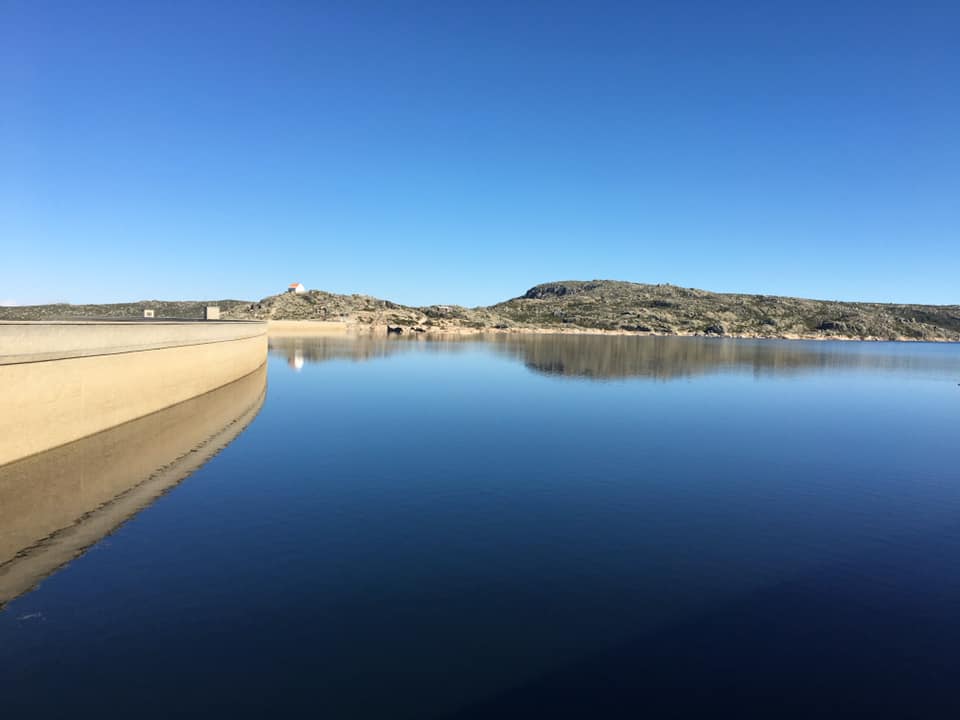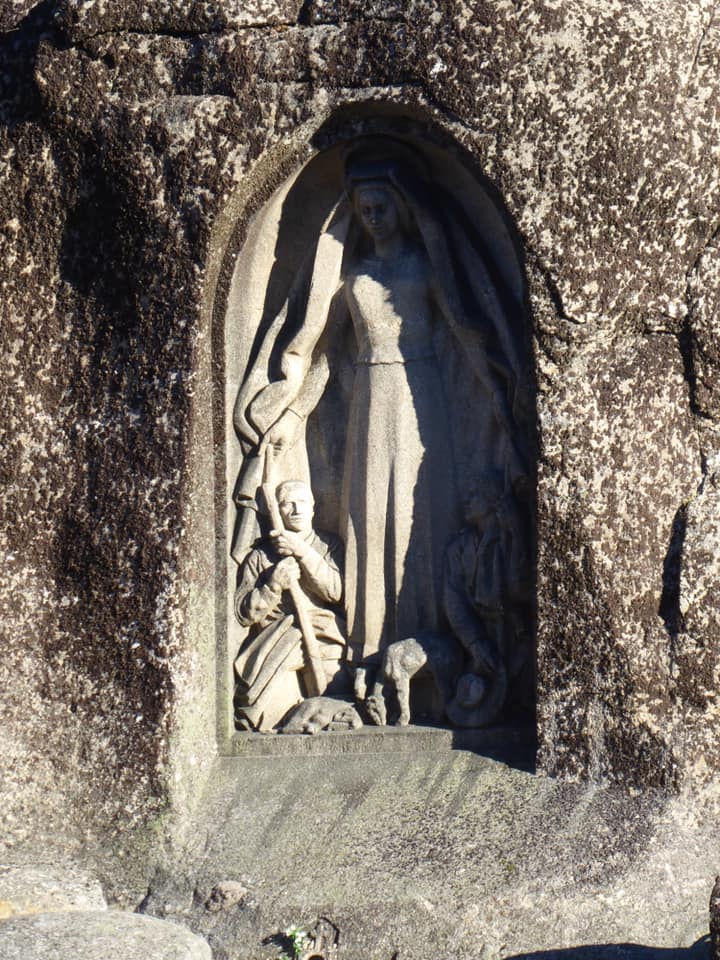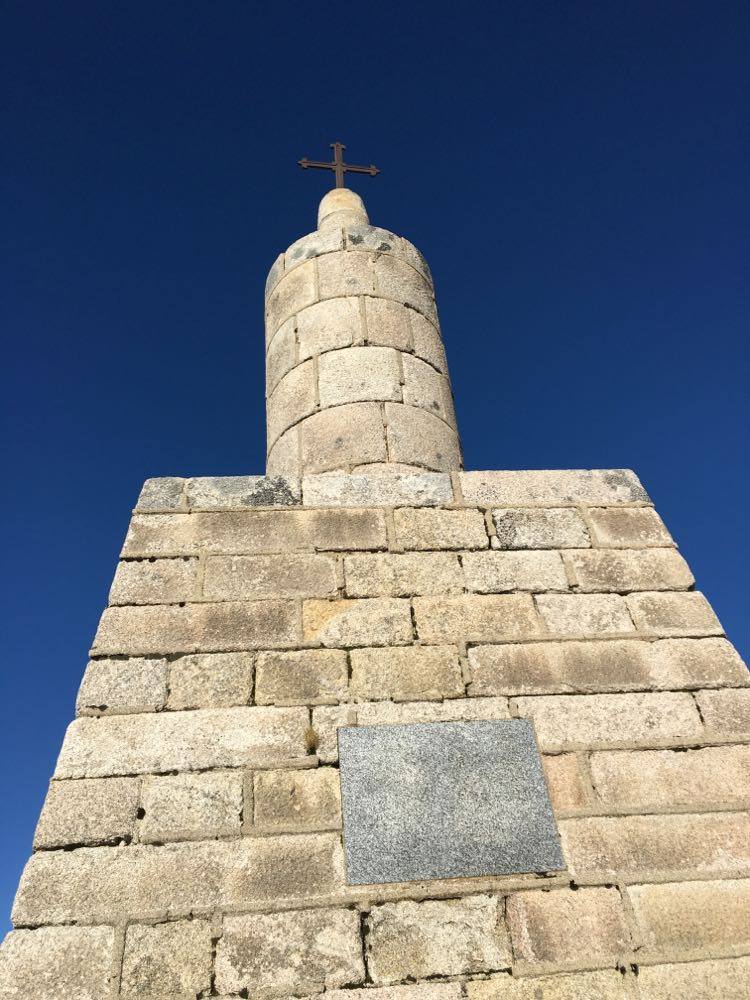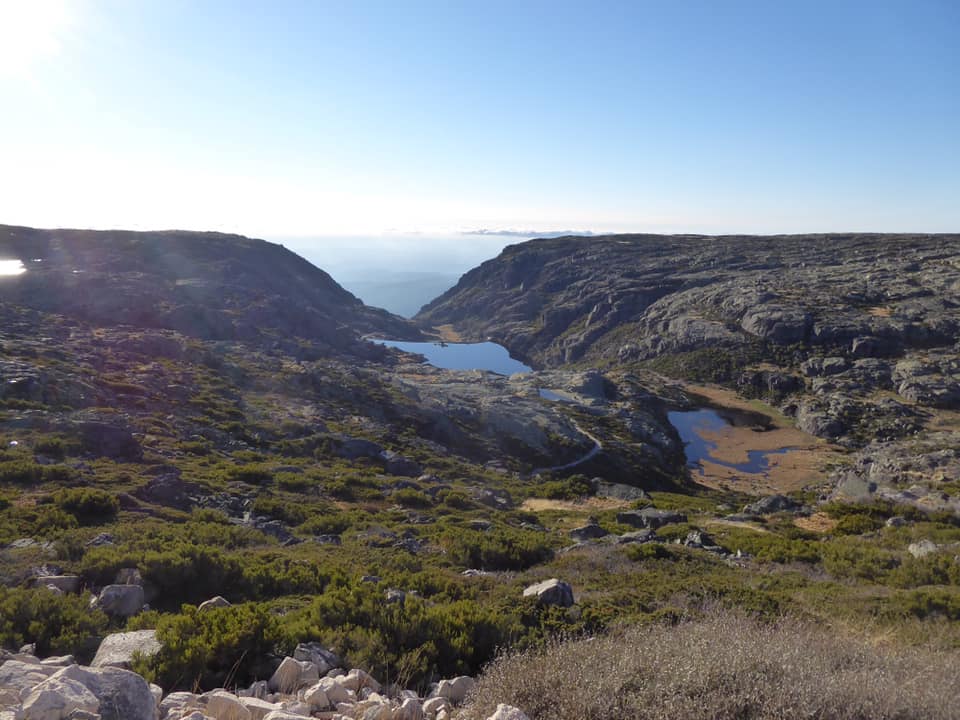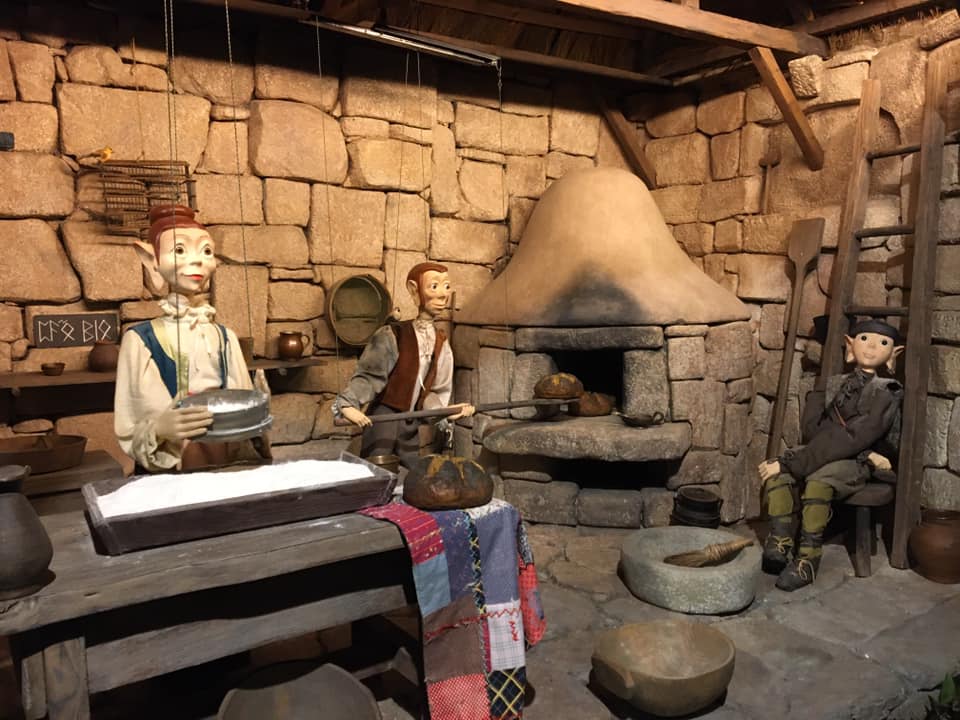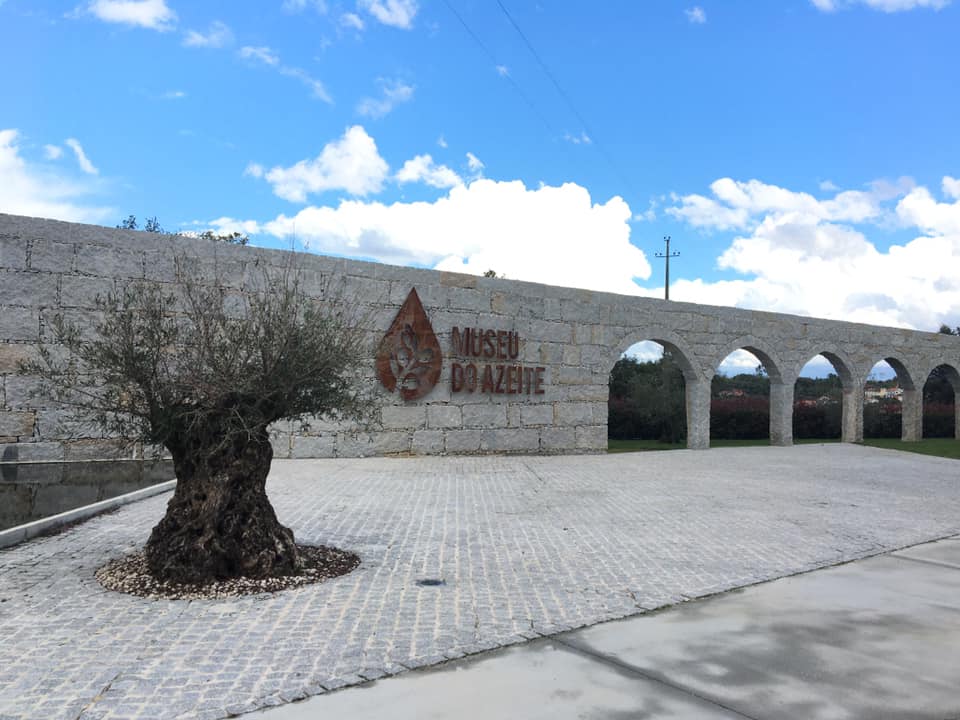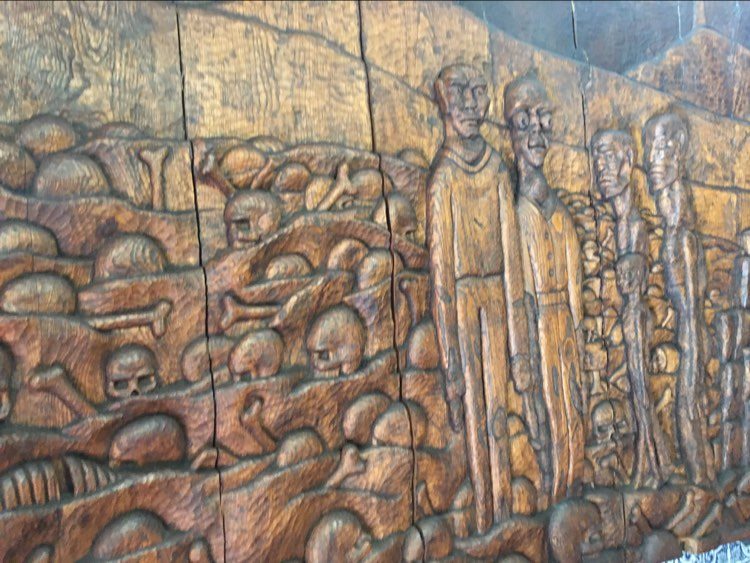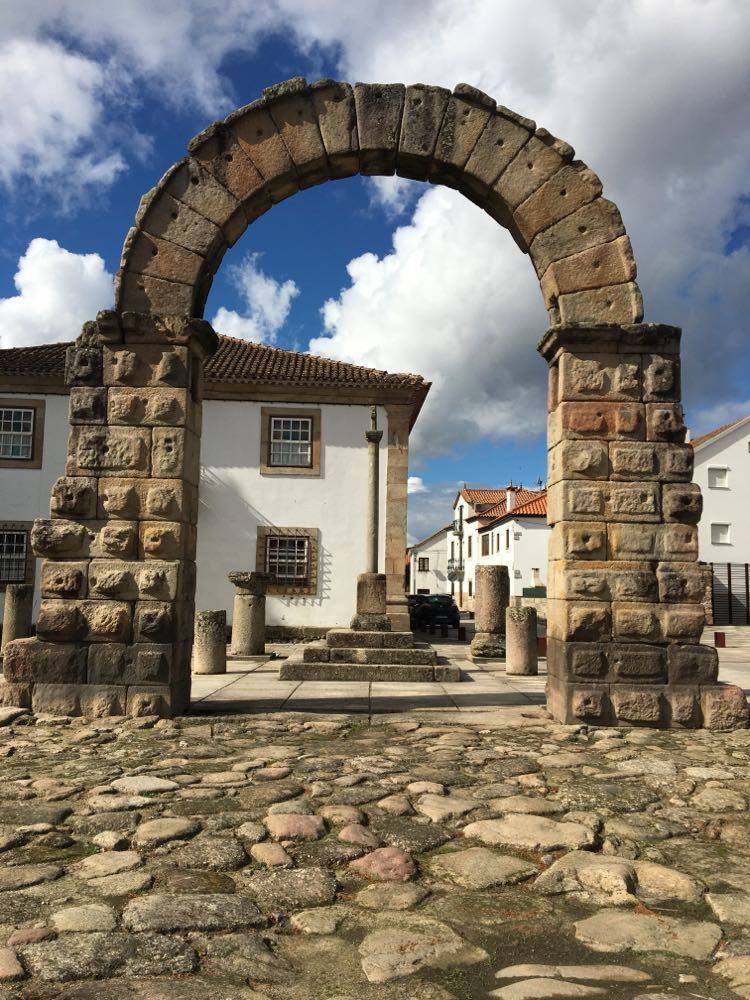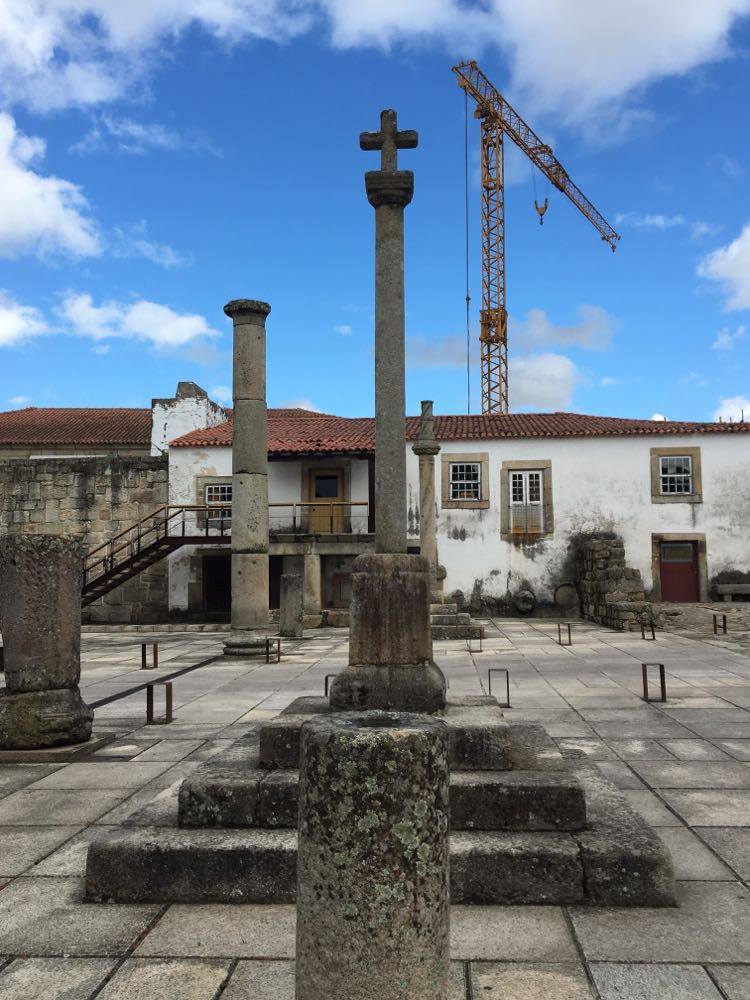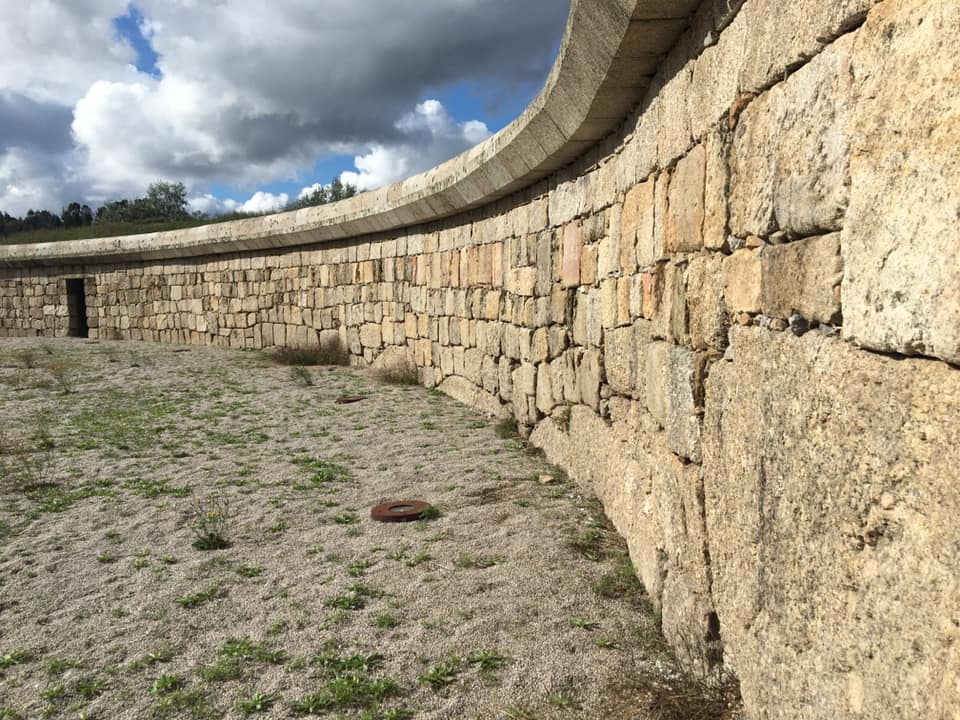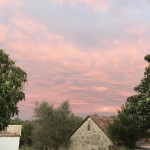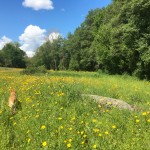So here is my second post to catch up on everything I did from June 2020 onwards!!! Once lockdown eased here in May I was keen to get out and explore the local area a bit, so this post will look at a few of the places I visited during the second half of the year.
Circuito Pré-histórico Fiais/Azenha
I am very lucky to be living very close to some really impressive Neolithic ruins, which I’ve visited twice now, once with a friend and again with my mum. There are perhaps a dozen megalithic monuments on the circuit, which is just ten minutes’ drive from home. These range from partial remains of funerary mounds to a stone-built shelter, two small perfectly restored dolmens and the Dolmen da Orca, a very large covered tomb chamber and entrance tunnel that is truly astounding. There’s even a tomb that was incorporated into a hay barn in recent years! Considering these sites are all around 5,000 years old and are just sitting there alongside the tracks, they are in amazing condition and are well worth a visit for anyone with an interest in archaeology or ancient history.
Archaeological Circuit of Cova da Moira
Even closer to home is another series of not-as-impressive yet still interesting rocks. Many of these have been carved out and used for burials, and it’s interesting to see the way the cut-out areas have been shaped to mimic a body and head. Some of these are within walking distance of home.
The Mondego River
During the summer a friend and I spent a few weekends exploring some harder-to-reach areas of the Mondego River in this area. Fortunately, he has a 4 wheel drive car, which meant we could venture down some very dodgy tracks to find wonderful river beaches that we often had totally to ourselves. The river was as warm as bath water and we often enjoyed a swim!
The first one we explored was along a rocky part of the river, where we discovered some gorgeous hidden sandy coves backed by woodland and, tucked away in the trees, the remains of a whole abandoned village, complete with bread oven.
Another beach had an abandoned mill, mill wheels still intact, that were once powered by water being forced through a dam.
Capela de Nossa Sra. dos Carvalhais
This abandoned church is just outside my local town of Carregal do Sal. Legend has it that, many centuries ago, a painting of Our Lady appeared in an oak tree. The people took it to a local church and placed it on the main altar but, the next day, to everyone’s amazement, the painting was missing from the altar and was found in the same oak tree. So it was believed that Our Lady’s desire was to remain there. The people decided to clear the forest and build a temple for Our Lady’s home but while cutting back the gorse and bramble, they found a font and chapel in ruins. The chapel was rebuilt and decreed her home and for centuries the local people brought offerings and maintained the building. At some stage this commitment was relinquished and now the chapel is once again in ruins. It’s an eerie place, which I couldn’t explore properly because of the vast amount of brambles around the entrances. I was hoping to go back early this year in the hope I could gain access, but lockdown has prevented that so far. One day…! From what I could see, though, there is still paint on the walls, blue and gold – I can’t wait to see inside.
Piodao
Mum came to visit in October and we drove a very long way to visit Piodao, one of central Portugal’s most prized schist villages. Regular readers of this blog may recall our rather disappointing visit to four schist villages last year – fortunately the day was redeemed by a walk around the remarkable Talasnal and I was hoping that Piodao would be just as good. And, fortunately, it was!
The drive there took us up and over the mountains and seemed to last forever, and then suddenly we rounded a corner and there, nestled into the Serra de Acor mountains, was a stunning village, all built in stone and slate with blue painted woodwork, the only bright spot the white-plastered church. The mountain range is steep and the houses huddle tightly on its slopes, accessible only by foot via very steep steps and cobbled pathways. It’s a stunning place to visit though not so good for those with dodgy knees! Tucked away amongst the houses are gift shops and cafes, plus a tiny chapel and an interesting shrine.
Fraga de Pena
On the way back from Piodao we stopped at Fraga de Pena, which is a stunning waterfall that drops steeply into a stream. The main waterfall is only a short walk from the main road, yet it was utterly deserted when we visited. Woodland paths wind their way up into the hills and apparently there are more falls up there, though we didn’t explore any further. There are several benches along the stream and then another up some steep stairs, overlooking the pool the water falls into. It was a magical place to stop for a picnic, with the only sounds the rushing of water and twittering of birds.
Serra da Estrela
While Mum was here, we picked the best day, weather-wise, to make the drive to Serra da Estrela, mainland Portugal’s highest mountain. I’ve been up the mountain once before, several years ago, but these days I can see it from the end of my drive, so I was very excited to go up there again! Last time I visited I went up from Covilha, to the south of the mountain, but this time we approached from the north west through Seia, so I had the fun of a new drive too. The road was very good but quite steep at times and I did have to stop the car once to let it cool down! The scenery is amazing – huge boulders, rocky outcrops, small glacial pools – and then we came across a huge barragem (reservoir) and hydroelectric dam, which I wasn’t expecting! So we stopped for a walk around the dam, and then carried on up and up and up until we reached the very top, Torre. This is a strange place – there are three old military radar towers which are stunning but in some disrepair, the ski runs all start here and there’s an old tower and a marker at the highest point – and there’s also a huge gift shop where numerous traders sell the same tacky gifts, including woolly hats, cork purses and mugs with penis handles! All very strange. You can also buy local cheese here; it’s very squidgy and super pungent, but very tasty. Like a baked Camembert but without needing baking! We had a walk around the shop, grabbed some lunch and admired the views – it’s pretty amazing when you’re standing above the clouds! Then we set off down again, but not before we’d seen the Senhora da Boa Estrela, which is an amazing sculpture carved into the rock face. We had a fantastic day and saw some incredible sights, but we barely scratched the surface of Serra da Estrela’s treasures. I hope to go back another time to explore further.
Museums
Finally, I’ve visited quite a few museums over the last few months (thanks to Mum being here and giving me the excuse to go!!).
There’s a small museum in Carregal do Sal that has the usual selection of cooking utensils, local artwork and clothing, plus an interesting archaeological gallery featuring some of the finds from the Neolithic sites.
Near Oliveira do Hospital we went to the Olive Oil Museum, which is more interesting than it sounds! It’s a very modern place, built in the shape of an olive branch, and each gallery takes you through the process of growing, harvesting and processing the olives.
Even more interesting was the Bread Museum in Seia, which had galleries focused not only on the traditions behind and process of baking bread, but also the role of bread in politics, religion and society. The best bit had to be the children’s gallery, however, which we were instructed to visit before we left – where the breadmaking process is demonstrated by puppets! It was very entertaining 😊
We also visited two museums in Bobadela, just down the road from the Olive Oil museum. This is a Roman town and as you arrive you are greeted by a goodly array of columns and arches in the town square. There are two museums – one showcases the town’s Roman history, and another museum, Museu Municipal Doutor António Simões Saraiva, is a collection of artefacts collected by the good doctor on his travels around the globe; it’s an interesting mix of objects though he did seem to have quite questionable taste …
However, the real surprise is tucked away behind the museums – a stunning Roman amphitheatre, complete with gated gladiator pits! It’s a truly atmospheric place, where you can almost hear the roar of the crowd as you walk within the circular wall. Who’d have thought there’d be something so incredible virtually on my doorstep!
So that’s just a taste of some of the incredible places I’ve visited over the last few months, and there are plenty more sights to see. Hopefully lockdown will ease before the summer and I can get out there exploring again!
